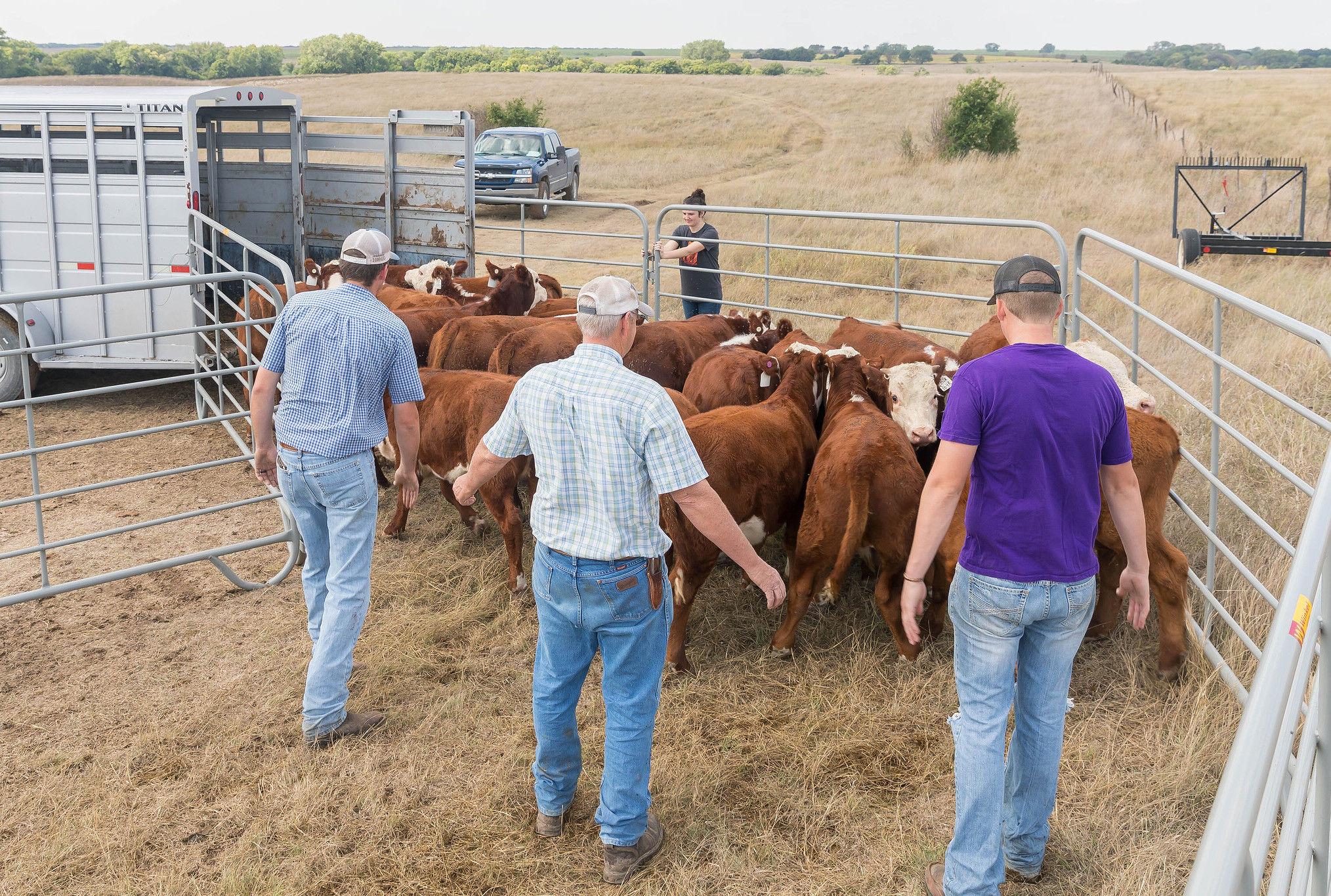K-State beef cattle experts offer advice on how to make sale day successful
Anyone who has ever left the house in a rush knows that it is not the ideal way to start the day, as important things can be left behind. And, the stress of the exit can leave a person feeling uneasy.
Similarly, when preparing young calves for sale day, moving them in a hurry and not following health protocols can not only be stressful, but it can also result in lost income due to lower sale weights, according to the experts at Kansas State University’s Beef Cattle Institute.
Speaking on a recent Cattle Chat podcast, the experts agreed that with proper planning, young calves can make this transition with minimal stress.
K-State agricultural economist Dustin Pendell said producers first need to decide how they want to market the calves.
“Look at the marketing options to see if there is a certain program that matches with your management system, and then follow the protocols of that program,” Pendell said. Examples he gave were preconditioning and vaccination programs.
K-State veterinarian Bob Larson added that a lot of special calf sales will have vaccination requirements for not only the type of vaccine to give, but also guidelines for when the vaccinations must be administered.
“Vaccines work best when they are delivered at a time when the calf isn’t particularly stressed, so if we can vaccinate them and then turn them back with their mothers, they are likely to respond well,” Larson said. “Also, these vaccines need time, so if they are administered the day before we co-mingle them it doesn’t provide much of a benefit.”
Along with making sure the calves are properly vaccinated, the experts say it is important to minimize the amount of weight lost between the ranch and the auction market.
“The main thing we are concerned about is the amount of shrink the calves experience, so if you are pulling them away from their mothers the morning they go to the sale, be sure to follow low-stress handling techniques to reduce the amount they will defecate and urinate tied to stress,” Lancaster said.
Some producers will follow a preconditioning protocol that involves weaning the calves and exposing them to a feed bunk and other water sources, Lancaster said. “The preconditioning diet should have about 30% forage, and then the morning you take them to the sale barn just hold them off of feed.”
Along with giving the calves time to adjust to a new diet, K-State veterinarian Brian Lubbers said there is a benefit to exposing them to close contact with people and machinery.
“Calves that are used to seeing humans and farm equipment will make the transition to the feeding phase of production go smoother, allowing your calves to perform better and build your reputation of selling high-quality calves,” Lubbers said.
Also, when you are taking the calves to an auction, Pendell suggested letting people know.
“Let your customers know when you are taking the calves to market through the community and social media channels,” Pendell said.
And the last tip they offered was to make sure the person driving them to the auction is a cautious driver.
“Research has shown that the driver matters – how they approach corners and stop signs is important,” Larson said. “Remember when you are delivering your calves, which is your paycheck, it is important that they arrive in the best possible shape.”
To hear the full discussion, listen to Cattle Chat on your preferred streaming platform.
PHOTO: Loading calves gently can help to minimize the amount of stress that calves experience, said K-State veterinarians. (K-State Research and Extension)




